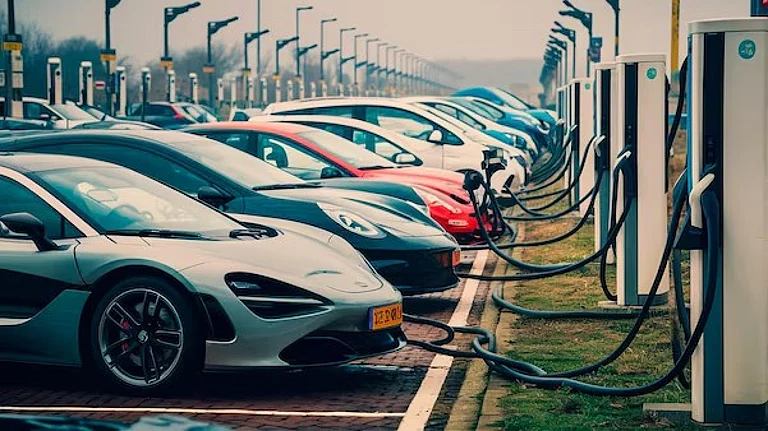India stands at a pivotal moment in its industrial evolution. While liberalisation and globalisation once unlocked unprecedented growth, that progress came at a cost, driven by unchecked resource extraction, pollution, and ecological degradation. Today, the model that fuelled our rise is no longer viable. The future demands a shift: from extraction to regeneration, and from short-term gains to long-term resilience.
How India Can Build a Regenerative Industrial Future by Partnering With Nature
Embedding biodiversity and Nature-based Solutions into India’s industrial strategy can balance economic growth with long-term ecological resilience
As climate change and biodiversity loss reshape the planetary landscape, nature can no longer be treated as a passive backdrop to industrial progress, but as a central actor in our growth story—a living system to protect, restore, and partner with. Extreme weather events, erratic rainfall, groundwater depletion, and the disappearance of pollinators are silently eroding GDP and threatening livelihoods. Investing in nature is a pre-emptive economic safeguard for job creation, ecosystem resilience, and equitable growth.
Encouragingly, India’s green sector is projected to generate over 7 million jobs by FY28, presenting a powerful opportunity for inclusive, future-facing growth. From embedding biodiversity into operations to investing in Nature-based Solutions (NbS), the path forward lies in partnership with the planet. This also presents a chance to ensure a ‘just transition’ for communities most affected by environmental degradation by placing equity, participation, and rights at the heart of policy and investment.
The Economics of Regeneration
For manufacturers, environmental stewardship is evolving beyond compliance. Regeneration is emerging as a new mandate—one that calls for embedding nature into everyday decision-making and recognising ecological health as central to long-term business resilience.
Leading companies are adopting nature-positive strategies by conducting biodiversity assessments before plant expansions, restoring degraded habitats, and increasing green cover. Others are going further, designing long-term programmes rooted in scientific evidence and community participation.
To truly integrate nature into business strategy and capital flows, funding for NbS must come from core business budgets—especially when such solutions mitigate operational risks, enhance resource efficiency, and support long-term compliance and market competitiveness. Business-funded NbS can be tracked through performance metrics and ROI, ensuring accountability and value creation.
Tata Motors has already begun implementing this approach. In FY25, we launched projects with strategic relevance across operations and the value chain. These include eco-restoration of disturbed habitats, wetland conservation, and mass plantation drives. These science-backed initiatives will be scaled by business partners in similar landscapes, with Tata Motors providing stewardship, enabling convergence funding, and monitoring impact.
Bringing Biodiversity into the Value Chain and Beyond
The next frontier lies in integrating biodiversity into supply chains. Raw material sourcing—especially in the automotive and allied sectors—carries a significant ecological footprint. By adopting science-based nature frameworks, manufacturers can identify and quantify their impacts on water, land, and biodiversity, setting measurable goals to reduce pressure on ecosystems.
This isn’t just about reputation or regulation. Nature-related risks—from water scarcity to soil degradation and zoonotic diseases—can disrupt operations, increase costs, and weaken community relationships. Conversely, investing in ecosystem health enhances resource efficiency, reduces volatility, and strengthens stakeholder trust.
For instance, Tata Motors is expanding its biodiversity efforts beyond core operations and supply chains to create large-scale impact aligned with global frameworks like the Kunming-Montreal Global Biodiversity Framework. Key initiatives include afforestation using indigenous community knowledge, wetland restoration to enhance ecosystems and support migratory birds, and community-driven solutions to mitigate human-elephant conflict in eastern and southern India. These actions reflect a strategic shift, where regeneration is not a one-off charismatic initiative but a business imperative.
Collaboration is Key
Biodiversity loss is a complex challenge that demands collective action. It requires collaboration across industry, government, civil society, and communities. The most impactful solutions blend scientific rigour with local knowledge, recognising that community-led, context-specific models often deliver the most lasting results.
This means investing in nature-based approaches, strengthening ecological databases and baselines, and embedding conservation into infrastructure and land-use planning. It’s about building synergy—where businesses, communities, and ecosystems thrive together. To this end, the government’s role in promoting complementary policies and incentives on resource use, planning and zoning to identify priority conservation landscapes, launching public-private partnerships to co-develop large-scale NbS, and establishing transparent, third-party systems to assess NbS effectiveness will be critical.
A New Industrial Vision
India’s industrial future must be regenerative by design. Nature is not a constraint—it’s our greatest ally in building a resilient, inclusive, and competitive economy. The shift from mitigation to regeneration is not just a sustainability goal. It is a strategic transformation.
As manufacturers, we have both the opportunity and the responsibility to lead this change. By embedding biodiversity into our operations, supply chains, and partnerships, we can ensure that India’s growth story leads to planetary resilience—one that doesn’t just preserve nature, but actively restores it.
(The author is the Chief Sustainability Officer at Tata Motors.)


